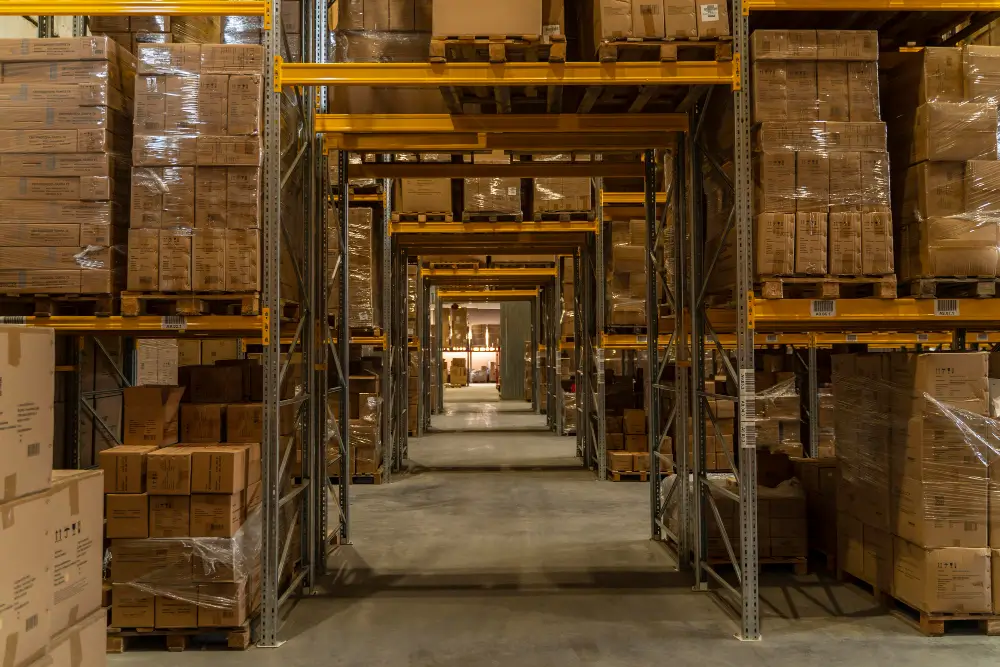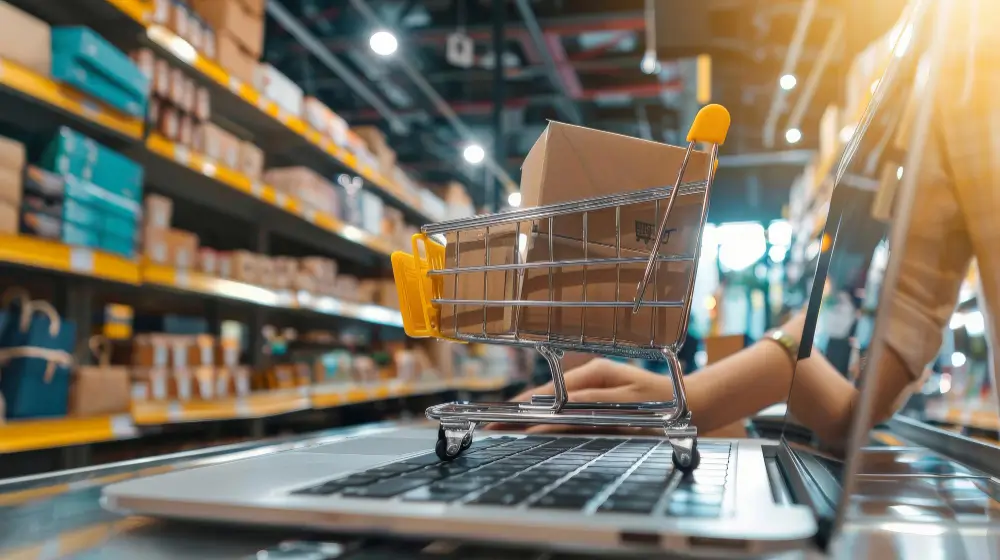In today’s competitive e-commerce landscape, scaling a business is about more than just a great product and a polished website. The secret weapon for sustainable growth lies in the seamless, efficient process that takes place after a customer hits “buy.” This is where a 3PL fulfillment service becomes indispensable.
A 3PL, or Third-Party Logistics, partner is a game-changer, transforming the logistical challenges of inventory management, order processing, and shipping into a powerful engine for success. This guide will demystify what a 3PL fulfillment service is and explain why it’s the strategic advantage your e-commerce business needs to thrive.
What is a 3PL Fulfillment Service?
A 3PL fulfillment service is a professional provider that specializes in managing your company’s logistics and distribution. They are a third party because they stand between you (the first party) and your customer (the second party). A 3PL doesn’t just store your products; they handle the entire operational workflow, from the moment your inventory arrives at their warehouse to the final delivery at your customer’s doorstep.
This comprehensive service typically includes:
- Receiving: Unloading and checking in inventory from your suppliers.
- Warehousing: Securely storing your products in their facility.
- Picking & Packing: Selecting the items for an order and preparing them for shipment.
- Shipping: Managing carrier relationships and shipping the package to the customer.
- Returns Management: Handling and processing returns (also known as reverse logistics).
By outsourcing these complex tasks, a 3PL service frees you from the burdens of managing a physical warehouse, hiring staff, and negotiating shipping rates. This allows you to focus on strategic growth, marketing, and product development.
Who Needs 3PL Services?
While a 3PL fulfillment service is beneficial for any e-commerce business, it is particularly vital for a few specific groups:
- Growing Businesses: As a business scales, managing orders from a garage or spare room quickly becomes unsustainable. A 3PL provides immediate scalability, allowing you to handle a sudden surge in demand without a massive capital investment.
- Brands with High Order Volume: Businesses processing hundreds or thousands of orders a month can achieve significant cost savings and efficiency gains by leveraging a 3PL’s infrastructure, technology, and discounted shipping rates.
- Companies Seeking to Expand: If you want to offer faster shipping across the country or internationally, a 3PL with a network of warehouses in multiple locations can make it possible.
- Startups: A 3PL allows startups to appear as a large, professional brand from day one, offering fast delivery and reliable service without the upfront costs of building their own logistics operation.
For a deeper dive into how this is especially critical for new and growing companies, read our article Why E-commerce Fulfillment Service Are Essential for Small Businesses.
Is 3PL B2B or B2C?
A 3PL fulfillment service is highly versatile and can handle both B2B (Business-to-Business) and B2C (Business-to-Consumer) logistics. While both involve moving products, they have different requirements:
- B2C (Direct-to-Consumer): This is the most common model, where the 3PL ships individual, single-unit orders directly to the end customer. Speed, accuracy, and a positive unboxing experience are paramount.
- B2B (Business-to-Business): This involves shipping large, bulk orders to retailers, distributors, or wholesalers. B2B fulfillment often requires specialized services such as palletizing, specific labeling (like GS1), and meeting strict retail compliance standards to avoid costly chargebacks. A competent 3PL can manage both B2C and B2B, providing a single partner for all your distribution needs.
What is the Difference Between a Warehouse and a 3PL?

While a warehouse is a key component of a 3PL’s operation, the two are not the same. A warehouse is a facility for storing goods. That’s its primary function. A 3PL, however, provides a comprehensive service that goes far beyond simple storage.
A 3PL offers the technology (like a Warehouse Management System or WMS), the labor, the expertise, and the network to manage the entire logistics process. They handle order processing, picking, packing, and shipping. A warehouse, on its own, is just a building. A 3PL is a strategic business partner that uses warehouses as part of its infrastructure to provide an end-to-end solution.
For a deeper understanding of how these different components fit into the broader supply chain, you can refer to our article on the supply chain.
Does 3PL Include Shipping?
Yes, absolutely. A 3PL fulfillment service includes shipping as a core part of its offering. A key advantage of using a 3PL is their ability to leverage economies of scale with shipping carriers. Because they ship a high volume of packages every day, they have access to significantly discounted rates that a single business couldn’t get on its own.
A 3PL’s shipping services include:
- Carrier Selection: They choose the most cost-effective and fastest carrier for each shipment.
- Label Generation: They automatically generate shipping labels with the correct tracking information.
- Tracking: They provide real-time tracking updates, which can be shared with both you and your customers.
In essence, a 3PL manages the entire shipping process for you, taking a massive burden off your shoulders and often saving you money in the long run.
What Are the Three Types of 3PL?
The term “3PL” can be a broad umbrella, but generally, providers can be categorized into three main types based on the services they specialize in.
- Standard 3PLs: These are the most common type and focus on the core services of warehousing, distribution, and transportation. They provide the fundamental logistics services that most e-commerce businesses need.
- Service Developer 3PLs: These providers go beyond the basics by offering additional value-added services. This can include specialized packaging, kitting, light assembly, returns management, and custom labeling. They are ideal for businesses with unique product requirements.
- Customer Adapter 3PLs: These are highly integrated and often manage an entire company’s logistics operation. They work almost as an internal logistics department, managing the relationship with multiple carriers, optimizing the supply chain, and providing consulting services.
These categories aren’t rigid, and many modern 3PLs will offer a blend of services from each, but this provides a good framework for understanding the different levels of partnership available.
Is 3PL or 4PL Better?
Choosing between a 3PL and a 4PL (Fourth-Party Logistics) depends entirely on your business’s needs. The key difference is the level of integration and control.
- 3PL: A 3PL is an asset-based or non-asset-based provider that executes your logistics. You, the business owner, still manage the relationship with the 3PL. It’s a partnership where you delegate the physical work.
- 4PL: A 4PL is a purely strategic and non-asset-based provider. They don’t own warehouses or trucks. Instead, they act as a single point of contact that manages all your other logistics providers (3PLs, carriers, etc.). Think of a 4PL as a master integrator who controls and optimizes your entire supply chain on your behalf.
A 3PL is better for businesses that want a single, trusted partner to handle all their physical logistics. A 4PL is better for large, complex enterprises that need to manage a global network of providers under one roof. For most growing e-commerce businesses, a 3PL provides the perfect balance of hands-on service and strategic partnership.
How a 3PL Fulfills Your Order: A Deeper Look

While the process seems straightforward, a 3PL uses sophisticated systems to execute every order with precision. When a customer places an order on your website, the 3PL’s Warehouse Management System (WMS) receives the data instantly. The WMS then determines the most efficient path for a picker to retrieve the item(s) from their storage location.
Once the items are picked, they are taken to a packing station where they are scanned to ensure accuracy. The WMS then calculates the optimal box size and generates the shipping label. The packaged order is then sorted by carrier and handed off for pickup. This streamlined, technology-driven process minimizes human error and ensures a fast, reliable delivery.
To learn more about this meticulous process and the technologies behind it, read our guide on the ABCs of Order Fulfillment Service for Ecommerce: Essential Knowledge.
Conclusion: Your Strategic Growth Partner
A 3PL fulfillment service is more than just a vendor; it’s a strategic growth partner. By taking on the complexities of logistics, a 3PL gives you the freedom to focus on building your brand, developing new products, and engaging with your customers. It provides the scalability, efficiency, and expertise you need to compete with larger brands and turn satisfied customers into loyal advocates.
Ready to unlock your secret weapon for e-commerce growth? Visit Logistics770.com to discover how our comprehensive 3PL fulfillment services can help you build a more efficient and successful business.
